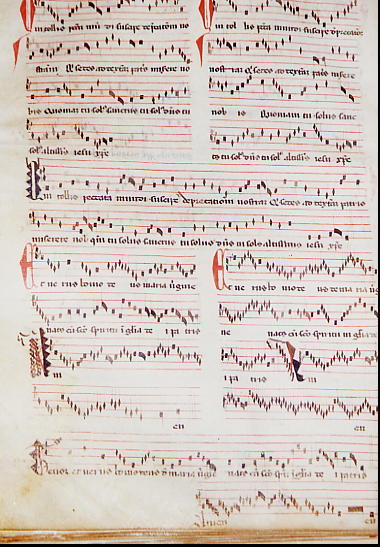The J. IV.115, the only solid collection of "Ars Nova", was discovered in 1920, perhaps among the objects in the Capitular Archives, wich hadn't been inventoried yet until that moment, and the announcement of its finding by Gino Borghezio provoked sensation among medieval music scholars. The code is substantially a French collection drawn up in Italy, a meeting-point of French music tendencies and circumstances linked to the Cathedral in the late XIV century. The notation is typical one of "Ars Nova" in this case put on pentagrams in red.
Among other things J.IV.115 hands us down some "unicas": the "Gloria" and the "Credo" monodic version, usually known in polyphonic form. For example, in the case of the "Gloria", we are faced with an unusual elaboration of the "Amen" wich could have been composed by one of two "cantores". The code J.IV.115 takes after the French "Ars Nova", but it experiences the influences of our XIV century music.
